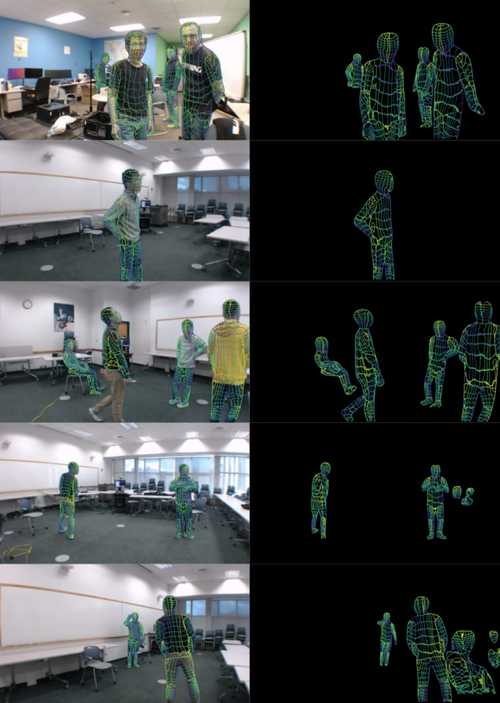When police suspected Danny Kyllo, an Oregon man, of growing cannabis in his home they drove to his house with a thermal imaging device to scan it. They found hot pockets in the house, which were used to obtain a search warrant and subsequently bust Kyllo.
Fortunately, a 5-4 Supreme Court decision ruled the scan an unlawful search under the Fourth Amendment, requiring a warrant the police did not obtain.
Score one for privacy, but the government is about to have a far more controversial and dangerous tool at its disposal to monitor what’s going on inside your home.
Unlike a thermal imager, this device is already in your home – and you put it there.
How It Works
WiFi is electromagnetic waves in the 2.4 and 5 GHz ranges. It’s the same thing as the light you see, only it can penetrate walls due to its much longer wavelength. Just like light (and echolocation) these waves also reflect off various surfaces and, when reconstructed properly, can be used to create an image.
Development of this technology goes back at least as far as July 2005, where researchers claimed at an IEEE Symposium that they had created an ultra-wideband high-resolution short pulse imaging radar system operating around 10 GHz. The applications for which were explicitly for military and police use, providing them with “enhanced situation awareness.”
A few years later, in 2008, researchers at UC Santa Barbara created an initial approach for imaging with WiFi that they presented at IEEE ACC 2009. A year later they demonstrated the feasibility of this approach.
The Race is On
Sensing the potential of this new surveillance technology, other researchers began piling on. Progress was initially slow but, in 2017, two researchers in Germany demonstrated the ability to do WiFi imaging using techniques borrowed from the field of holography. According to Philipp Holl, an undergrad student and lead study author who worked with Friedemann Reinhard of the Technical University of Munich to develop the new method, “The past two years have seen an explosion of methods for passive Wi-Fi imaging.”
At the time, the technology could only make out rough shapes of things. “If there’s a cup of coffee on a table, you may see something is there, but you couldn’t see the shape,” Holl says, “but you could make out the shape of a person, or a dog on a couch. Really any object that’s more than 4 centimeters in size.”
The Controversy Begins
In 2018 the team at UC Santa Barbara published a paper titled “Et Tu Alexa?” examining the potential threats of this emerging technology. They examined the problem of adversarial WiFi sensing and the risk to privacy resulting from the widespread deployment of wireless devices, which could be used to track your precise physical location, movement, and other physiological properties.
Fortunately, they also propose some countermeasures for defending against such attacks to reduce the quantity and quality of the WiFi signals captured by the attacker, such as Geo-fencing and rate-limiting. These methods are not as effective with IoT devices, though, due to the frequency with which they make transmissions.
The Breakthrough
Up until this point it was necessary to use frequencies higher than commercial WiFi (2.4 and 5 GHz) to achieve decent imaging resolutions. That all changed in February 2019 when a team from Michigan State University published a paper in IEEE Access outlining how they were able to use signals at 5.5 GHz, which matches the 802.11n/ac WiFi protocol, to create a 2-D image of two reflecting spheres and a reflecting X-shaped target, concluding “full 2-D imagery is possible by capturing the WiFi signals present in typical environments.”
Adding AI and Going 3-D
At MobiCom 2020, researchers from the University of Buffalo, presented their WiPose technology, touted as “the first 3-D human pose construction framework using commercial WiFi devices.” This system uses the 2-D imaging technology previously discussed to construct a 3-D avatar of the humans captured by it. The system uses a deep learning model that encodes the prior knowledge of human skeletons in the construction process of the 3-D model.
In 2019, former DARPA contractor Ray Liu launched his first commercial product in the WiFi sensing domain. Pitched as a way of “Making the world safer, healthier, and smarter,” the original military and law enforcement usages mentioned when this technology was born in 2005 were cast aside. The company claims the technology is so accurate that it can sense your breathing using nothing but standard WiFi signals.
In a 2021 company blog, Liu discusses the development of IEEE 802.11bf, a new WiFi protocol, which is aimed at standardizing WiFi imaging across all devices – thus making it easier for companies such as his to exploit compatible wireless networks. Liu was elected to serve as IEEE President for 2022, and the new standard continues to be developed to this day.
Further refinements to the imaging technology itself have been made. In late 2021 another paper was submitted to IEEE outlining how the researchers were able to achieve high-resolution imaging results with commercial WiFi signals using beamforming on the 802.11n/ac protocol.
Ready for Production
The perfect WiFi imaging system may have just been introduced to the world in December 2022, when researchers from Carnegie Mellon University married the latest in WiFi sensing technology to a human form estimation engine known as DensePose.

(Left Column) image-based DensePose (Right Column) WiFi-based DensePose
DensePose is a technology developed by Meta/Facebook, beginning in 2018. It’s very similar to the WiPose system we previously discussed and aims at “mapping all human pixels of an RGB image to the 3D surface of a human body.” The researchers modified DensePose so that, rather than taking an RGB image, it would be compatible with the imagery being produced by state-of-the-art WiFi sensing technologies. The resulting system “can detect the pose of humans in a room based solely on the WiFi signals passing through the environment.”
Big Brother’s New Eyes
It’s telling how the pitch for this technology has pivoted from military and police use to keeping people safe in their own homes. The true purpose of this is obviously for law enforcement, the military, and intelligence agencies. We already live with mass digital surveillance and if you don’t believe that this won’t get incorporated into their plans to monitor everything you do, then you haven’t been paying attention.
Apart from putting CCTV cameras in everyone’s living spaces, this technology offers a comprehensive and supremely surreptitious way of putting eyes in every room of your house and place of work. Indeed, this just may become the norm. With nearly a third of Gen Z favoring the installation of government surveillance cameras in your home, this less-intrusive method may just find even broader support from the brainwashed masses. It will be possible to know where you are in the house and exactly what you’re doing, from sitting on the toilet to making love.
We’ve seen how easily intelligence agencies can get secret warrants to surveil anyone of particular interest. We’ve also seen just how easy it is for someone to become a target for surveillance. You very well might, one day, find your WiFi router and access points feeding imagery to an alphabet agency that didn’t like your social media posts, while armed thugs wait for the perfect moment to execute their next no-knock raid.



























